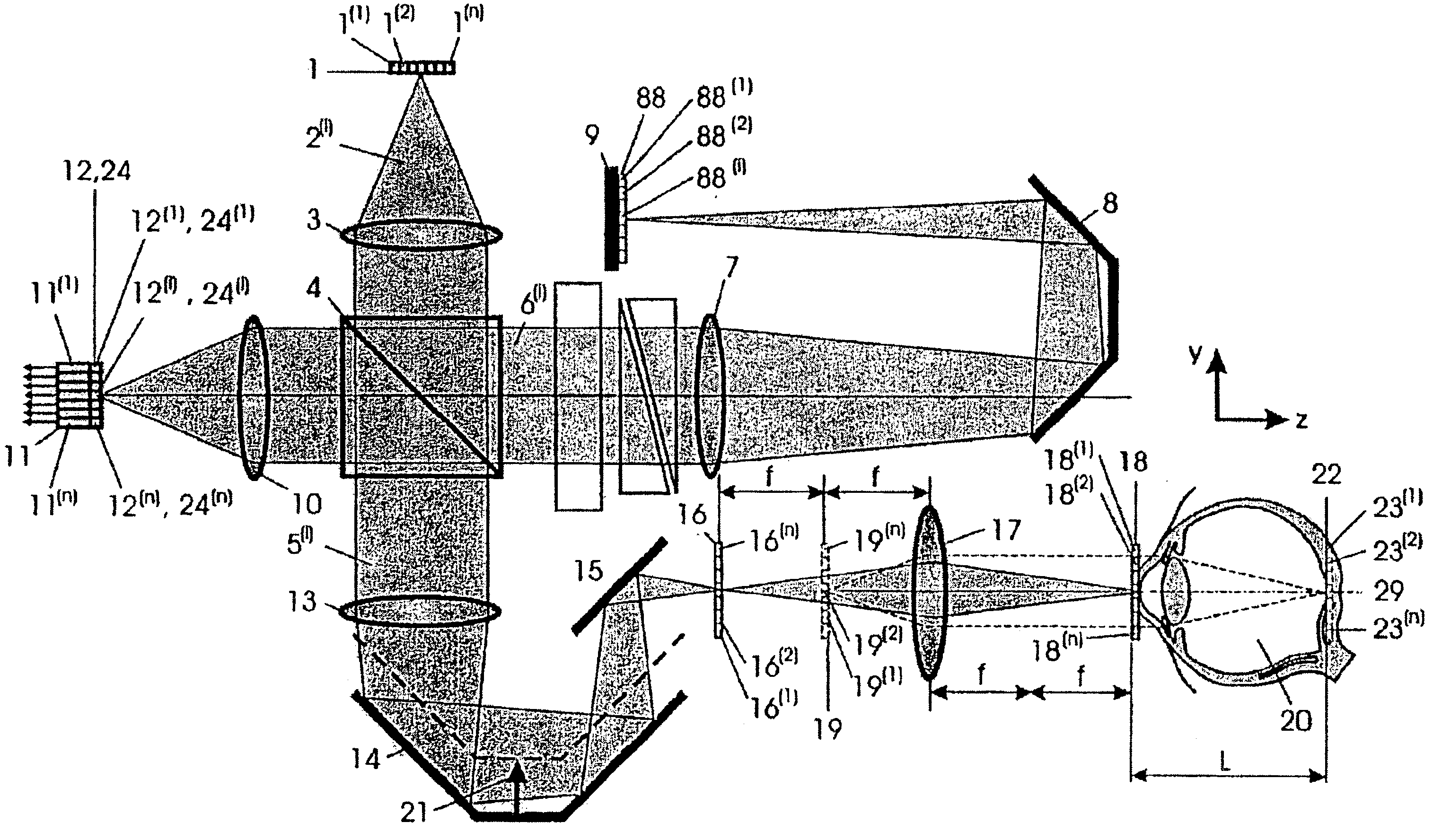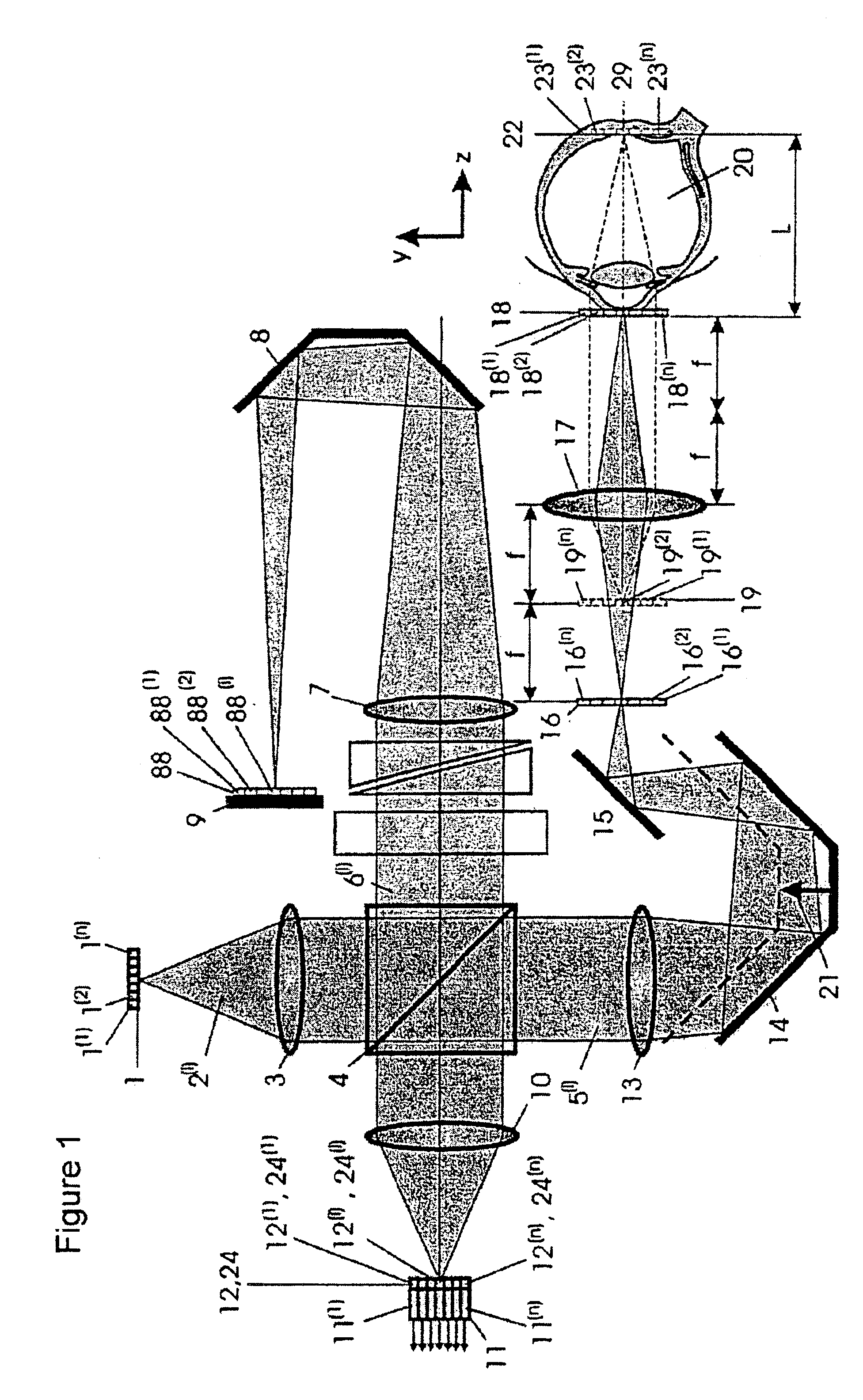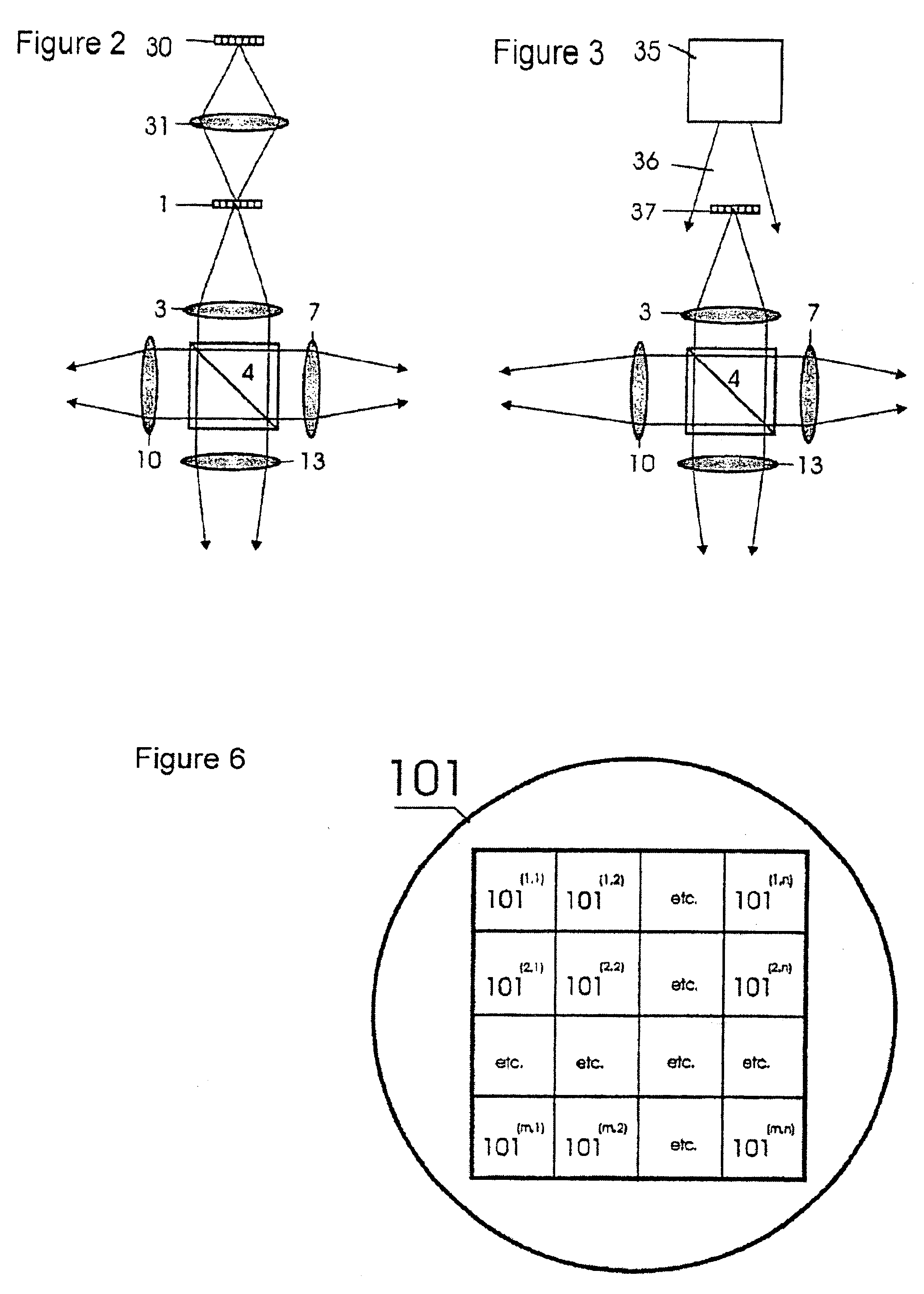Optical multiplex short coherence interferometry on the eye
a coherence interferometry and optical multiplex technology, applied in the field of eye internal geometry detection and imaging, can solve the problems of difficult use of subjective methods, limited access to the eye geometric structure, and difficulty in detecting aberrations in the ey
- Summary
- Abstract
- Description
- Claims
- Application Information
AI Technical Summary
Benefits of technology
Problems solved by technology
Method used
Image
Examples
Embodiment Construction
[0019]By “short coherence” is meant that light of short coherence length is used in this interferometry method. In this connection, the optical path length of the measurement beam of a two-beam interferometer is scanned by matching or tuning the length of the reference beam after interference occurs. During this depth scan, as it is called, the reference mirror is moved along the axis of the reference beam. When the path length of the reference beam from the beam splitter to the measurement location and back within the coherence length is equal to the path length of the measurement beam from the beam splitter to a light-reemitting point in the object (eye) and back to the beam splitter, interference occurs at the interferometer output. The area at the measurement location contributing to this interference is called the “coherence window”. By continuously displacing the reference mirror, the z-position of light-reemitting points in the object is recorded by means of the interference ...
PUM
 Login to View More
Login to View More Abstract
Description
Claims
Application Information
 Login to View More
Login to View More - R&D
- Intellectual Property
- Life Sciences
- Materials
- Tech Scout
- Unparalleled Data Quality
- Higher Quality Content
- 60% Fewer Hallucinations
Browse by: Latest US Patents, China's latest patents, Technical Efficacy Thesaurus, Application Domain, Technology Topic, Popular Technical Reports.
© 2025 PatSnap. All rights reserved.Legal|Privacy policy|Modern Slavery Act Transparency Statement|Sitemap|About US| Contact US: help@patsnap.com



